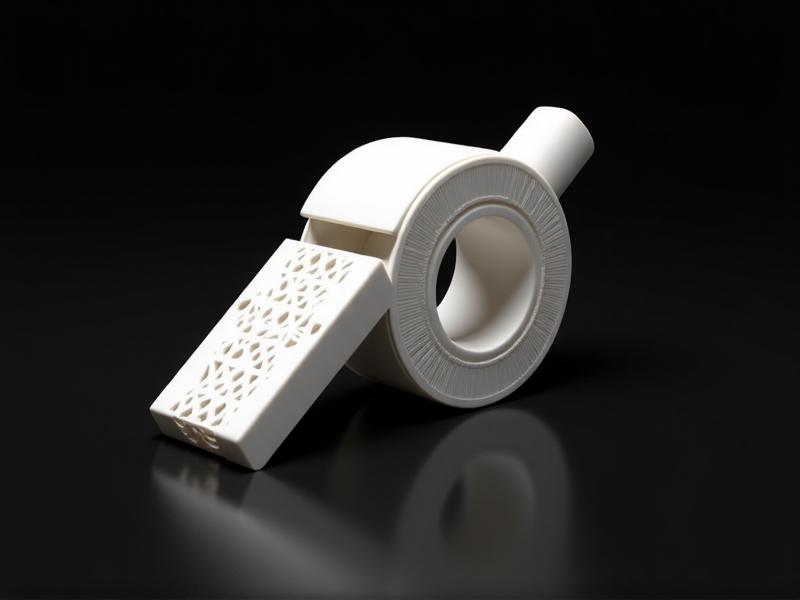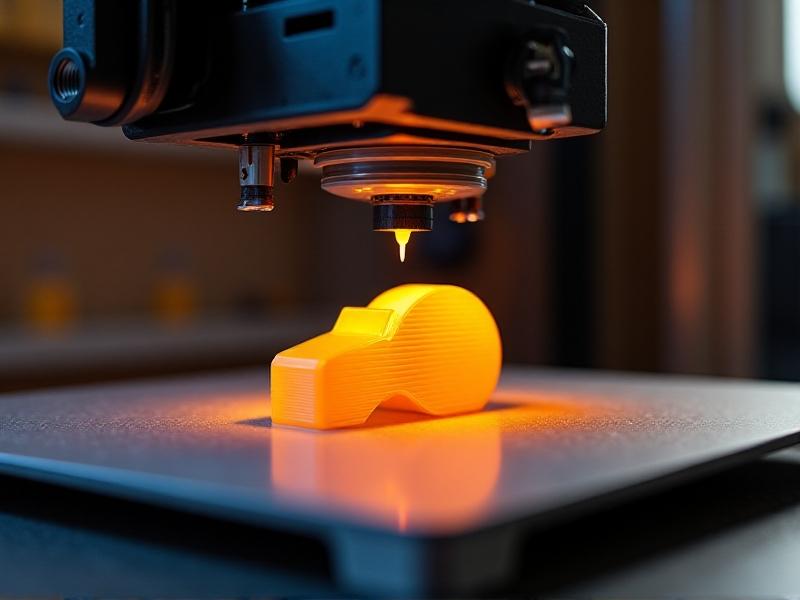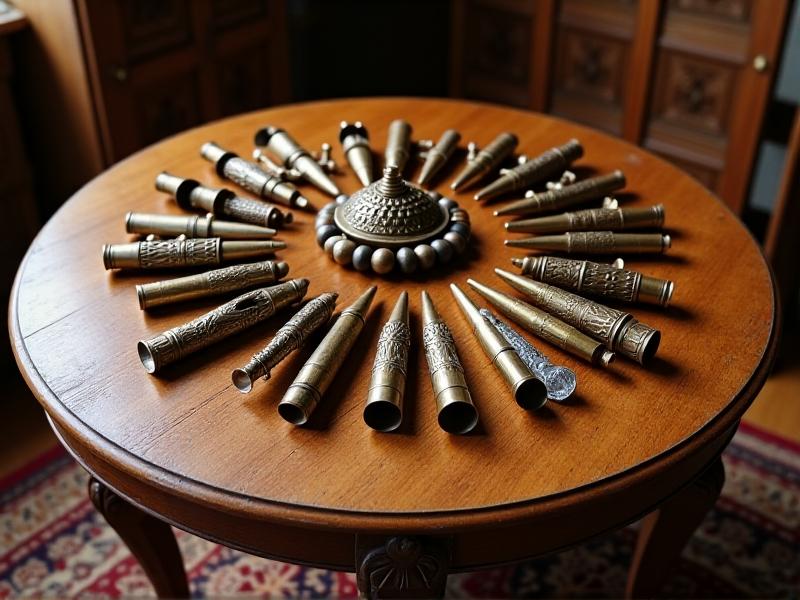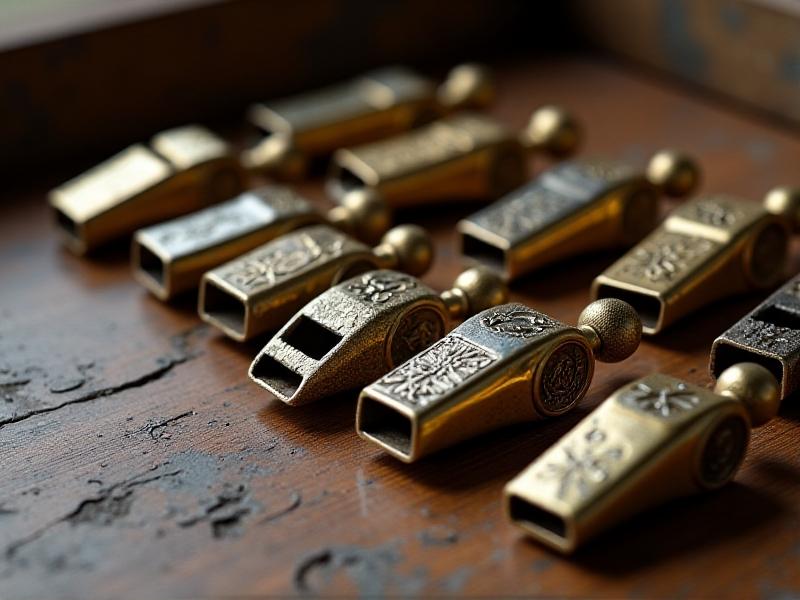Prototyping Custom Whistles Using Additive Manufacturing Processes
The Evolution of Whistle Design: From Traditional to Custom
Whistles have been a part of human culture for centuries, serving as tools for communication, safety, and even entertainment. Traditionally, whistles were crafted from materials like wood, metal, and clay, with designs limited by the constraints of manual craftsmanship. However, the advent of additive manufacturing, commonly known as 3D printing, has revolutionized the way we approach whistle design. This technology allows for the creation of custom whistles with intricate geometries and personalized features that were previously unimaginable.
Additive manufacturing processes enable designers to experiment with complex internal structures and external shapes, optimizing the whistle's acoustic properties and ergonomics. By leveraging digital design tools, it's now possible to prototype whistles that cater to specific needs, whether for sports referees, emergency responders, or musical performers. The ability to rapidly iterate and test designs has significantly reduced the time and cost associated with traditional manufacturing methods, making custom whistles more accessible to a broader audience.
Moreover, the shift towards additive manufacturing aligns with the growing demand for sustainable and eco-friendly products. Unlike traditional methods that often result in material waste, 3D printing uses only the necessary amount of material, minimizing environmental impact. This section will explore how additive manufacturing has transformed the whistle industry, paving the way for innovative and customized solutions.

Understanding Additive Manufacturing: The Basics
Additive manufacturing, or 3D printing, is a process that builds objects layer by layer from digital models. Unlike subtractive manufacturing, which involves cutting away material from a solid block, additive manufacturing adds material only where needed, resulting in less waste and greater design flexibility. This technology has become increasingly popular across various industries, including aerospace, healthcare, and consumer goods, due to its versatility and efficiency.
The process begins with a digital 3D model, created using computer-aided design (CAD) software. This model is then sliced into thin layers, which the 3D printer interprets to build the object. There are several types of additive manufacturing technologies, including fused deposition modeling (FDM), stereolithography (SLA), and selective laser sintering (SLS), each with its own advantages and limitations. For whistle prototyping, FDM and SLA are commonly used due to their precision and ability to produce detailed designs.
One of the key benefits of additive manufacturing is the ability to create complex geometries that would be difficult or impossible to achieve with traditional methods. This is particularly advantageous for whistle design, where internal air channels and external shapes play a crucial role in sound production. Additionally, 3D printing allows for rapid prototyping, enabling designers to quickly test and refine their ideas before moving to full-scale production.

Designing Custom Whistles: Key Considerations
Designing a custom whistle involves more than just creating an aesthetically pleasing shape. It requires a deep understanding of acoustics, ergonomics, and material properties to ensure the final product meets its intended purpose. The first step in the design process is defining the whistle's function. Is it for signaling in noisy environments, producing musical notes, or serving as a collectible item? Each application will influence the design decisions, from the size and shape of the whistle to the materials used.
Acoustic performance is a critical factor in whistle design. The internal air channels must be carefully designed to produce the desired sound frequency and volume. This often involves experimenting with different geometries and dimensions to achieve the optimal balance between sound quality and ease of use. Ergonomics also play a significant role, as the whistle should be comfortable to hold and operate, especially for users who rely on it for extended periods.
Material selection is another important consideration. While traditional whistles are often made from metal or plastic, additive manufacturing opens up a wider range of options, including biodegradable and composite materials. The choice of material will affect the whistle's durability, weight, and sound characteristics. Additionally, designers must consider the manufacturing process itself, ensuring that the chosen material is compatible with the selected 3D printing technology.

Prototyping Techniques: From Concept to Reality
Prototyping is a crucial stage in the development of custom whistles, allowing designers to test their ideas and make necessary adjustments before final production. Additive manufacturing has made this process faster and more cost-effective, enabling designers to create multiple iterations of a whistle in a short amount of time. The first step in prototyping is creating a digital 3D model using CAD software. This model serves as the blueprint for the physical prototype, which is then printed using a 3D printer.
Once the prototype is printed, it undergoes a series of tests to evaluate its performance. This may include acoustic testing to measure sound frequency and volume, as well as ergonomic testing to assess comfort and usability. Feedback from these tests is used to refine the design, with changes made to the digital model and a new prototype printed. This iterative process continues until the whistle meets the desired specifications.
In addition to functional testing, prototyping also allows designers to experiment with different materials and finishes. For example, a whistle may be printed in a variety of colors or textures to explore different aesthetic options. This flexibility is one of the key advantages of additive manufacturing, as it enables designers to create truly unique and customized products. By the end of the prototyping phase, the whistle should be ready for full-scale production, with all design elements finalized and tested.
Material Choices: Balancing Performance and Sustainability
The choice of material is a critical factor in the design and manufacturing of custom whistles, as it directly impacts the product's performance, durability, and environmental footprint. Traditional materials like metal and plastic have long been used in whistle production, but additive manufacturing has expanded the range of available options. Today, designers can choose from a variety of materials, including biodegradable plastics, composites, and even metals, each with its own set of properties and advantages.
When selecting a material, designers must consider several factors, including the whistle's intended use, the desired sound characteristics, and the manufacturing process. For example, a whistle designed for outdoor use may require a more durable material that can withstand harsh weather conditions, while a musical whistle may benefit from a material that enhances sound quality. Additionally, the material must be compatible with the chosen 3D printing technology, as not all materials can be used with every type of printer.
Sustainability is also an increasingly important consideration in material selection. Many designers are now opting for biodegradable or recycled materials to reduce the environmental impact of their products. Additive manufacturing supports this trend by minimizing material waste and enabling the use of eco-friendly materials. By carefully selecting the right material, designers can create custom whistles that not only perform well but also align with modern sustainability goals.
Testing and Refinement: Ensuring Quality and Performance
Once a custom whistle prototype has been created, it must undergo rigorous testing to ensure it meets the desired standards of quality and performance. This testing phase is essential for identifying any issues or areas for improvement before the whistle goes into full-scale production. The first step in testing is often acoustic evaluation, where the whistle's sound frequency, volume, and clarity are measured. This helps determine whether the whistle produces the desired sound and whether it can be heard clearly in its intended environment.
Ergonomic testing is another important aspect of the evaluation process. This involves assessing how comfortable the whistle is to hold and use, particularly for individuals who may rely on it for extended periods. Feedback from users is invaluable during this stage, as it provides insights into any discomfort or usability issues that may not be immediately apparent to the designer. Based on this feedback, the design can be refined to improve ergonomics and overall user experience.
Durability testing is also crucial, especially for whistles designed for outdoor or high-stress environments. This may involve subjecting the whistle to extreme temperatures, moisture, or physical impact to ensure it can withstand real-world conditions. Any weaknesses identified during durability testing can be addressed by modifying the design or selecting a more robust material. By thoroughly testing and refining the prototype, designers can ensure that the final product meets the highest standards of quality and performance.
The Future of Custom Whistle Manufacturing
As additive manufacturing technology continues to evolve, the possibilities for custom whistle design and production are virtually limitless. Advances in 3D printing materials, such as conductive inks and smart polymers, could enable the creation of whistles with embedded electronics, such as built-in microphones or Bluetooth connectivity. This would open up new applications for whistles in areas like sports coaching, where real-time feedback and data collection could enhance performance and training.
Another exciting development is the integration of artificial intelligence (AI) into the design process. AI algorithms can analyze vast amounts of data to optimize whistle designs for specific applications, such as maximizing sound projection or minimizing material usage. This could lead to the creation of highly specialized whistles tailored to the unique needs of individual users or industries. Additionally, AI could streamline the prototyping process by predicting potential issues and suggesting design improvements before a physical prototype is even created.
Sustainability will also play a key role in the future of custom whistle manufacturing. As environmental concerns continue to grow, designers and manufacturers will increasingly prioritize eco-friendly materials and processes. Additive manufacturing is well-positioned to support this shift, as it inherently reduces material waste and enables the use of recycled or biodegradable materials. By embracing these innovations, the whistle industry can continue to evolve and meet the changing needs of consumers in a sustainable and responsible manner.








